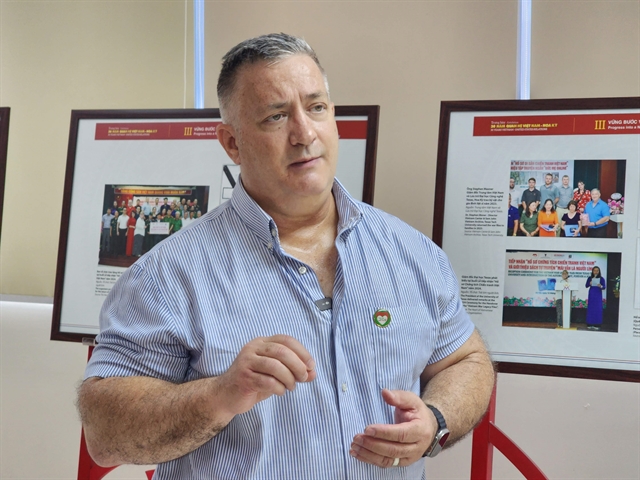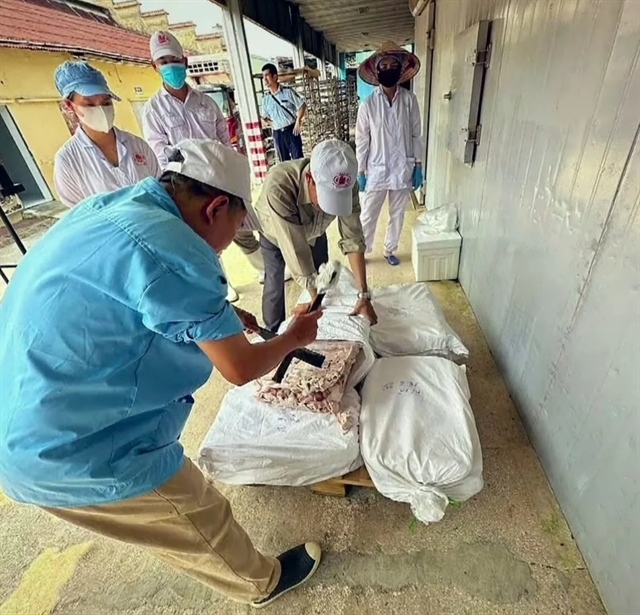 Opinion
Opinion

 |
| Steve Maxner, Director of the Việt Nam Center and Archive at the Texas Tech University. — VNS Photo Trọng Kiên |
Việt Nam News talks to Steve Maxner, Director of the Vietnam Center and Archive at Texas Tech University, about the effort to recover and identify the remains of missing-in-action (MIA) soldiers from both sides during the war in Việt Nam. The archive is the US' largest and most comprehensive collection of information on the war.
How do you assess Việt Nam’s level of cooperation with the US on MIA issues, given necessary procedures and the need for access to sensitive documents and locations?
Bilateral cooperation on the MIA issue began with the US trying to recover the remains of soldiers who were shot down in aircraft or went missing in action. The Vietnamese Government has always been as helpful as possible in addressing these issues.
In the early years — particularly during the first two decades after the war, from 1975 to 1995, the year Việt Nam and the US normalised relations — Việt Nam was focused on other pressing challenges, including Agent Orange, dioxin contamination and unexploded ordnance. These were life-threatening issues that had to be dealt with urgently to protect the Vietnamese people.
Now that we've worked cooperatively on dioxin remediation and clearing unexploded ordnance — which has helped reduce injuries and fatalities — that's allowed the Government to start focusing on MIA recovery.
We’ve developed a strong collaborative relationship. The US continues to work closely with the Vietnamese Government to access sites where we can hopefully recover the remains of Americans.
And we’re mining into archival materials in the US — documents that might provide vital information to the Vietnamese Government and families. Some of these are captured documents that offer clues about the circumstances and locations where those soldiers died — sometimes the documents were literally taken off the body of the soldiers killed in combat. This information can help Việt Nam identify and return the remains of its own soldiers as well. It’s very much a two-way partnership between the US and Việt Nam.
How important has the MIA issue been in the normalisation of relations between the two countries and in the thriving relationship we enjoy today?
There are many elements that drive the relationship today. It’s now a Comprehensive Strategic Partnership, and a lot of that has to do with contemporary geopolitical dynamics, that's the core right now of the relationship.
But what we’re doing on MIA recovery efforts is more about the humanitarian side of the relations. Military, defence and economic cooperation are certainly important, but this work touches the hearts of people in both countries.
When we talk to American families who lost loved ones during the war, and we tell them we're returning personal documents to Vietnamese families — letters and diaries that they had never seen before — they feel it, and they said they understand what that family must feel and how they must treasure that material, because it means everything to finally understand a little bit about what soldiers experienced during the war. They've been mourning those deaths ever since, and now, hopefully this can help provide some solace.
Can you share more about your work — how many documents have you recovered, or perhaps a story that’s been especially meaningful to you?
We have a sizeable archive — about 30 million pages in total. That’s modest compared to Việt Nam's national archives, but within that, we have 2.7 million pages of captured documents. Those are the materials we’re currently working through to find and return to families.
There are so many powerful stories. One that stands out involved a set of letters written during Tết in 1967. These were personal messages — soldiers writing to their families, wishing them well, asking about home, telling them how the war is going for them. The letters never made it. They were captured by US or allied forces.
Last year, we were able to finally return those letters to the family, to say, “This is what your son was writing more than 50 years ago”... And the emotional impact on the family is just so powerful because it's something precious, very precious to us. And the same thing with the diaries that we return — those diaries contain so much about that experience for the soldiers, all their concerns and their fears and their hopes for the future and the worries that they have for their families. It's a very touching and emotional experience for all of us.
Now for a slightly sensitive question — do you face any risk of budget cuts?
Fortunately, no. Our project is funded by the State of Texas and Texas Tech University. We don’t receive federal grants, so we’re not affected by US federal budget cuts. We're internally funded, and it's an expression of the support that we received from our university to continue this research effort, but also to support this humanitarian effort, to return documents to meeting these families.
What are the biggest challenges in your work?
The scale of the collection is one of the greatest challenges. Going through 2.7 million pages is an enormous task. We’re lucky to have a full-time staff member, Dr Alex-Thai Vo, who serves as a research assistant professor — his job is to go through the archive looking for documents we can return, as well as information on potential grave locations for soldiers from all sides. — VNS




